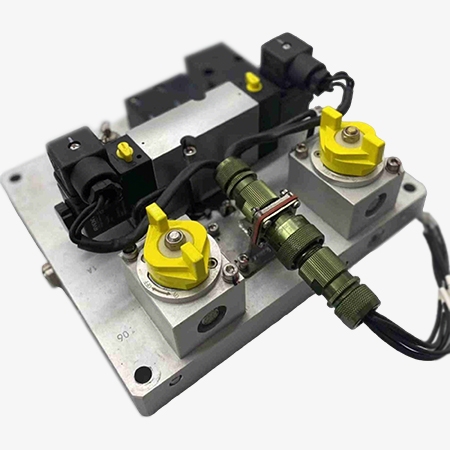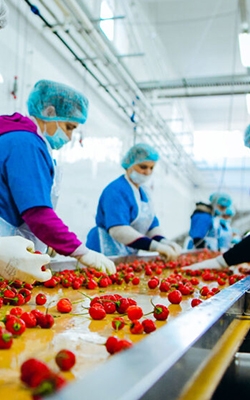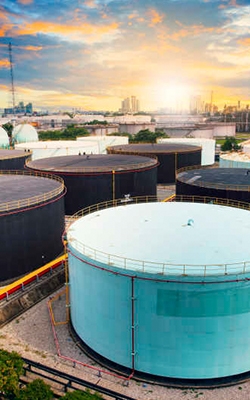This gas chromatograph analyzer, EPC/EFC control not only has a complete system self-test function and automatic fault recognition function, but also has 8 external event expansion function interfaces, which can be equipped with various function control valves and work according to their own set timing. The user-friendly one-click start function and multi-core 32-bit embedded hardware system ensure the reliable operation of the gas chromatograph machine, EPC/EFC control.

Technical characteristics of a gas chromatograph analyzer, EPC/EFC control
- Its detection system adopts a logarithmic amplification version, and the detection signal has no external trigger synchronized with the cut-off value.
- The entire series is equipped with a color touch screen, which displays real-time flow and pressure values, and the gas chromatograph analyzer status is clear at a glance.

Carrier gas control
- The SISCO gas chromatograph analyzer adopts EPC/EPC control improves the repeatability and accuracy of qualitative and quantitative analysis, and makes parameter settings more convenient.
- It can also split the flow rate/split ratio automatically, saving carrier gas.
Applications
The SISCO 7-inch LCD screen gas chromatograph is an efficient analytical instrument widely used in various fields for the separation, qualitative, and quantitative analysis of components in complex mixtures. It is widely used in petroleum, chemical, pharmaceutical, food, environmental protection, disease control, scientific research institutions, and quality inspection departments.
 Environment protection
Environment protection
 Food
Food
 Petrochemical industry
Petrochemical industry
 Pharmacy
Pharmacy
| Model | SISCO-GC-128 | ||
| Name | Description | ||
| Injector | Temperature | Maximum operating temperature 400 ℃ | |
| Pressure setting range | 0~700KPa | ||
| Total flow setting range | 0~200mL/min | ||
| Adapter | Φ3 and Φ4 packed column | ||
| (S/SL) capillary column injection port | Temperature | Maximum operating temperature 400 ℃ | |
| Pressure setting range | 0~700KPa | ||
| Total flow setting range | 0~200mL/min N2 | ||
| Column oven | Inside dimension | 280mm×31mm×160mm | |
| Operate temperature | Room temperature: 4 ℃~420 ℃ | ||
| Resolution of temperature setting value | ±0.1℃ | ||
| Maximum rate | 60℃ | ||
| TPD | 9th order | ||
| Maximum running time | 600 minutes | ||
| For every 1 ℃ change in room temperature, the column temperature changes | 0.01℃ | ||
| Compensation for loss of dual channel chromatography column | |||
| Detector | |||
| FID | Detection limit | ≤2.5×10-12g/s (n-hexadecane) | |
| Dynamic range | 107 | ||
| RSD | ≤3% | ||
| Ignition function | Automatic ignition, reignition | ||
| R temperature setting | Maximum 420 ℃ | ||
| TCD | Sensitivity | 5000mV·Ml/30min | |
| Baseline noise | ≤0.05mV | ||
| Dynamic range | 105 | ||
| RSD | ≤3% | ||
| ECD | Radioactive source | Ni63 | |
| Minimum detectable quantity | 80fg/s | ||
| Detection limit | ≤8×10g/Ml (r666) | ||
| Dynamic range | 103 | ||
| Temperature range | Room temperature: 7 ℃~420 ℃ | ||
| FPD | Temperature setting | Maximum 350 ℃ | |
| Detection limit | ≤2×10g-12/s (P); ≤4×10-11g/s (S) | ||
| Sample | methyl-parathion | ||
| Dynamic range | P103 S102 | ||
Specifications of the hydrogen generator
| Model | SISCO-SPH-300 | |
| Name | Hydrogen generator | |
| Purity | >99.999% | |
| Internet traffic | 0~300mL/min | |
| Output pressure | 0~0.4MPa (factory setting 0.3MPa) | |
| Pressure stability accuracy | ±0.005Mpa | |
| Environmental condition | Ambient temperature | 40℃ |
| Relative humidity | ≤85%, no large amount of dust or corrosive gases | |
| Power supply | AC 220V±10%, 50Hz±5%, 200W | |
| Dimensions | 320mm×180mm×370mm | |
|
Weight |
10kg | |
Specifications of the air generator
| Model | SISCO-SPB-3 |
| Name | Air generator |
| Output relative concentration of hydrocarbons in the air | <0.1ppm |
| Maximum relative concentration of hydrocarbons in the input air | <100ppm |
| Output pressure | 0~0.5MPa (factory setting 0.4MPa) |
| Output traffic | 0~2000mL/min |
| Environmental temperature for use | 0~40℃ |
| Environmental humidity for use | <85% |
| Maximum power | 560W |
| Dimensions | 260mm×360mm×665mm |
| Weight | 27kg |
Q1: What is a gas chromatograph?
A1: Gas chromatograph is an instrument used for analyzing volatile compound mixtures, which can separate different components in a sample and perform qualitative and quantitative analysis. Widely used in fields such as environmental monitoring, food safety, petrochemicals, medicine and health.
Q2: How does a gas chromatograph work?
A2: Gas chromatography achieves component analysis by gasifying the sample and injecting it into a carrier gas stream, separating it through a chromatographic column, and then detecting the signals of each component with a detector. Common detectors include hydrogen flame ionization detector (FID), thermal conductivity detector (TCD), electron capture detector (ECD), etc.
Q3: What are the common types of detectors in gas chromatographs?
A3: Gas chromatographs (GC) can be classified according to different standards, mainly based on their working principles, detector types, injection methods, and other aspects.
- FID (Hydrogen Flame Ionization Detector): High sensitivity, suitable for organic compounds.
- TCD (Thermal Conductivity Detector): Highly versatile and suitable for both organic and inorganic gases.
- ECD (Electron Capture Detector): Suitable for detecting halogen compounds, such as pesticides.
- FPD (flame photometric detector): used for sulfur-containing and phosphorus containing compounds.
- MS (Mass Spectrometry Detector): can provide molecular structure information, with higher sensitivity and selectivity.
Tips: How to ensure the normal operation of gas chromatography and the accuracy of experimental results?
- Preparation before operation
Instrument inspection: Ensure that the instrument is in good condition, check if the gas supply is sufficient, if the flow rate is stable, and set appropriate column temperature, injection port, and detector temperature. Sample preparation: Select the appropriate injector and injection method based on the properties of the sample to ensure accuracy and reproducibility of the sample. - Sample injection system
Sample injector selection: Use a microsyringe for liquid samples, a six way valve for gas samples, and dissolve solid samples before sampling. Gasification chamber: Ensure that the gasification chamber is clean, has no catalytic effect, and has a large heat capacity to ensure instantaneous gasification of the sample.
separation system. Column selection: Choose the appropriate column type (packed column or capillary column) and stationary phase 34 according to the analysis requirements.
Temperature control: For complex samples, use programmed heating to improve separation efficiency.
detection system. Detector selection: Choose the appropriate detector type (concentration type or mass type) based on the analysis object. Detector maintenance: Regularly clean the detector to ensure its sensitivity and accuracy. - Temperature controller
Temperature setting: Set an appropriate temperature based on the properties of the sample and analysis requirements to ensure that the sample vaporizes instantly in the gasification chamber and is effectively separated in the chromatographic column recording system. Data recording: Use an automatic balancing electronic potentiometer or a chromatograph equipped with an integrator to record data, ensuring accuracy and reliability of the data. - Routine maintenance
Instrument cleaning: Regularly clean the chromatography column, injection port, and detector to prevent contamination and blockage. Gas supply: Ensure the purity of the carrier gas and regularly replace the purification and drying tubes. Column maintenance: Clean the oxygen in the system before aging, and reduce the column temperature to below 50 ℃ before shutting down to prevent oxidation and degradation of the fixative.
Thank you for buying industrial test and measurement equipment on SISCO.com, all products sold by SISCO and the partner cover a 12 months warranty, effective from the date of receiving the products.
What is covered?
SISCO is responsible for providing free spare parts, and free technical support to assist the customer to repair the defective products until the problem is solved.
What is not covered?
- Product purchased from anyone other than a SISCO store or a SISCO authorized reseller.
- Expendable parts.
- Routine cleaning or normal cosmetic and mechanical wear.
- Damage from misuse, abuse or neglect.
- Damage from use of parts other than SISCO approved.
- Damage from use outside the product’s usage or storage parameters.
- Damage from use of parts not sold by SISCO.
- Damage from modification or incorporation into other products.
- Damage from repair or replacement of warranted parts by a service provider other than a SISCO authorized service provider.
- Damage caused by the application environment not meeting the product usage requirements and the failure to perform preventive maintenance.

